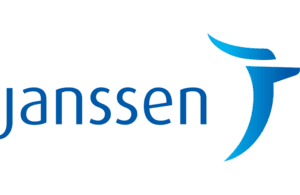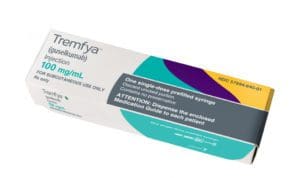 A post-hoc analysis published in Lancet Rheumatology suggested that Janssen’s IL-23 inhibitor Tremfya (guselkumab) is effective in treating psoriatic arthritis (PsA) patients with symptoms affecting the spine and sacroiliac (SI) joints. In addition, the patient subset had sustained improvement through 52 weeks.
A post-hoc analysis published in Lancet Rheumatology suggested that Janssen’s IL-23 inhibitor Tremfya (guselkumab) is effective in treating psoriatic arthritis (PsA) patients with symptoms affecting the spine and sacroiliac (SI) joints. In addition, the patient subset had sustained improvement through 52 weeks.
The study focused on psoriatic arthritis patients in the company’s Phase 3 DISCOVER-1 and DISCOVER-2 studies with axial symptoms and sacroiliitis, an inflammation of one or both of the sacroiliac joints connecting the pelvis to the spine.
Among patients with psoriatic arthritis, sacroiliitis is a relatively common condition. One small study found that 38% of PsA patients had sacroiliitis.
Janssen plans a separate study to bolster the hypothesis that guselkumab improves spinal symptoms associated with psoriatic arthritis.

Tremfya (guselkumab) won FDA approval for adult patients with active psoriatic arthritis in 2020.
A future study is “something we’re very interested in pursuing, and we’re going to work to make that happen,” said Dr. Alyssa Johnsen, vice president, rheumatology and maternal-fetal immunology disease area leader at Janssen. “I do think that would be another important piece of evidence to prospectively study these patients.”
To assess guselkumab’s efficacy in treating spinal symptoms, the researchers used the Bath Ankylosing Spondylitis Disease Activity Index (BASDAI) score and Ankylosing Spondylitis Disease Activity Score (ASDAS) as guidelines.
Recipients receiving guselkumab at four-week intervals and eight-week intervals demonstrated sustained improvements in the BASDAI and ASDAS scores.
The Lancet Rheumatology analysis supports Janssen’s case that Tremfya can treat a constellation of psoriasis- and psoriatic-arthritis-associated symptoms, Johnsen said. The potential for guselkumab to treat a range of symptoms associated with psoriatic arthritis is important “because the condition is so heterogeneous,” Johnsen added. Psoriatic arthritis can be “a multidimensional disease, and patients really need treatments for all of these dimensions.”
A separate study found that the drug was effective at reducing PsA-related fatigue.
Current FDA indications for the drug include the treatment of “moderate-to-severe plaque psoriasis who are candidates for systemic therapy or phototherapy” and “active psoriatic arthritis.”